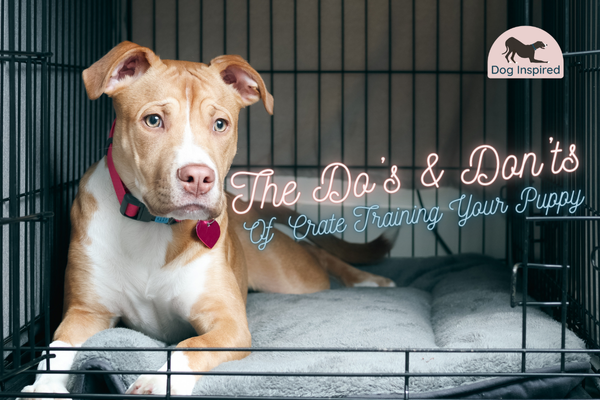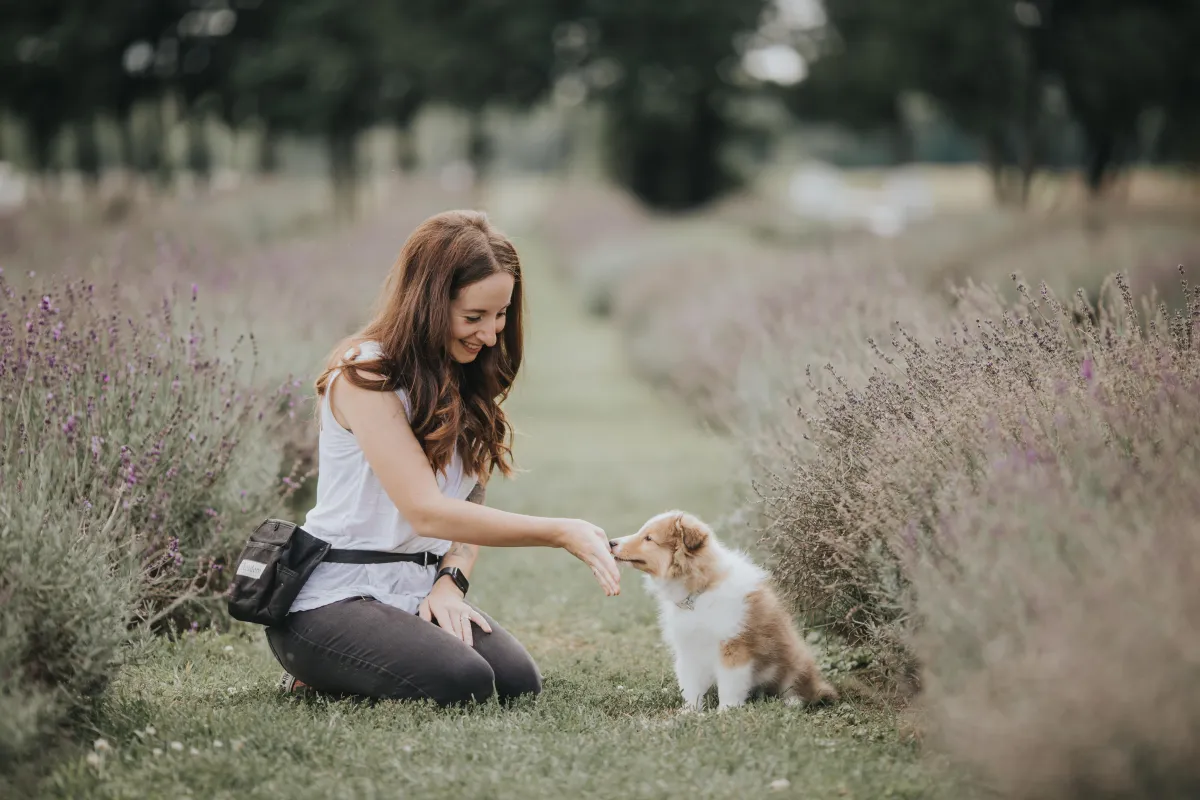Dog Inspired Blog
Guidance, Tips & Inspiration for Every Step of Your Dog’s Journey.

The Do's and Don'ts of Crate Training Your Puppy

Crate training is a valuable tool for both puppies and their owners. When done correctly, it provides a safe and comfortable space for your puppy while aiding in house training and preventing destructive behaviours.
As a separation anxiety specialist, crate training should never involve the "cry it out" method, which can cause undue stress and anxiety to your puppy. In this blog, we'll explore the do's and don'ts of crate training using positive reinforcement methods, ensuring a positive experience for both you and your puppy.
The Do's:
✓ Make the Crate Inviting: Introduce your puppy to the crate gradually. Place soft bedding inside and enticing toys or treats to encourage your puppy to explore the space willingly. (Don't close the door on them - especially the first few times!)
✓ Associate the Crate with Positive Experiences: Offer their meals and put treats inside the crate, creating positive associations with being in there. You can also provide special toys or chews that your puppy only receives when in the crate like a stuffed kong or a bully stick.
✓ Train a cue: Introduce a cue, such as "crate" or "bed," when encouraging your puppy to enter the crate. Lure puppy in with a treat and continue to feed if they stay in.
✓ Start with Short Sessions: Begin crate training with short periods of time and gradually increase the duration as your puppy becomes more comfortable. This helps prevent your puppy from feeling overwhelmed or anxious.
❗️ If Puppy Whines or Barks: If it's a grumble or a bit of frustration, you can definitely wait for a moment of quiet before opening the door. However, panic and stress is much different. A panicked puppy will escalate quickly and the whining and barking intensifies. This is response to being afraid. Open the door and give your puppy a break. Next time, prevent the barking/whining to avoid panic by making the session shorter. (This also works to avoid creating the habit of whining to get out in bored or frustrated puppies.)
✓ Provide Mental Stimulation: Offer interactive toys or puzzle feeders inside the crate to keep your puppy mentally stimulated and entertained during crate time.
The Don'ts:
✕ Avoid Leaving Your Puppy Alone for Extended Periods: Puppies have limited bladder control and should not be left in the crate for extended periods, especially during the early stages of crate training. Max 4 hours for puppies younger than 6 months old.
(and honestly, dogs should not be in a crate for longer than that without a break to potty and stretch their legs. Come home for lunch, ask a neighbour or hire a dog walker)
✕ Don't Force Your Puppy into the Crate: Forcing your puppy into the crate can create fear and resistance. Instead, encourage your puppy to enter the crate voluntarily using positive reinforcement techniques.

Crate training can be a positive and effective method for teaching your puppy good behaviours, preventing unwanted behaviours and providing them with a safe space of their own. By following the do's and don'ts outlined in this guide, you can ensure that crate training is a positive experience for your puppy, free of stress and anxiety. Remember to be patient, consistent, and always use positive reinforcement techniques to encourage desired behaviours. With time and practice, your puppy will learn to love their crate as a cozy retreat and a valuable training tool.
Need extra help with crate training your puppy? Sign up here to our newsletter and get a free copy of our crate training e-book!

Let's Work Together
Whether you’re just bringing home a puppy or you’ve already started your service dog training journey, Dog Inspired is here to help you every step of the way.
Service Areas: Deux-Montagnes, St-Eustache, Laval, Montreal
